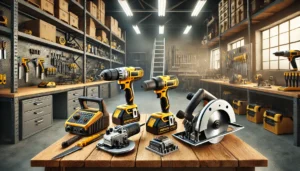Pipe fittigs are neccessary elements of pipings whereby they allow to join, bend, reduce, or even close the pipe flow. Every fitting has its role and they are made to meet a variety of industries needs. This article discusses the various types of pipe fittings and their applications.
Pipe Fittings: What Are They?
A pipe fitting is any device employed to connect two or more pipes, change the direction of flow, increase or decrease the diameter of the pipes or completely stop the flow. Common pipe fittings include elbow tee and cross fittings , which are used to change the direction of the pipe lines, reduce or increase the size of the pipe lines cutting the pipe lines to length for easy transport and transporting or threading the pipe lines, and capping or plugging ends of the lines. These fittings are essential in designing as well as operating efficient piping systems.
Elbows
Elbows and bends are considered to be the fittings which are used the most for flow direction alteration in piping systems. These elbows can come in many types, such as, 90 elbows which would arise the flow direction by 90 degrees, 45 elbows which would arise the flow by 45 degrees, reducing elbows which can change the direction along with the diameter of the pipes, 180 elbows or return elbows that are required for heat exchangers and heating coils. Elbows can also be distinguished by radius types. Long radius elbows (1.5D) are said to have less pressure loss as compared to short radius elbows (1D) which are recommended in cases where there is not enough space but short radiuses incur more pressure loss.
Tees and Crosses
Tees and crosses allow the subdivision of the piping network systems. For example, in the straight tee the branches are the same diameter as the run pipe whereas in reducing tees the branches have a diameter smaller than that of the run pipe. Barred tees, which are used in pigged pipelines, in addition to not allowing pigs into the branch, also contain short cylindrical ends that have a slightly smaller inside diameter than the main body in order to resist fluid flow. Wye tees, or lateral tees, branch out at angles that are 45 degrees from the aforementioned pipe to reduce turbulence. Crosses comprise one inlet lead-in pipe and three outlet pipes; these are usually observed in inline systems as in fire sprinkler systems.
Pipe Reducers
Pipe reducers are fittings that allow to change or reduce the size of the pipe at the end, and the two types of reducers are concentric which can be placed on vertical points where central lines of pipes are colinear and eccentric which can be placed on horizontal pipes in order to eliminate the formation of air pockets.
Caps and Plugs
Caps and plugs are fittings that permanently close pipe ends, caps protect the ends of pipes with a possibility of future pipe connections or terminations, while plugs close the ends of all connective pipes that have threads or any other used pipes.
Couplings and Unions
Couplers and unions serve the purpose of sliding and turning or twisting the pipes together in order to connect them. Inclusive couplers connect two accurately similar-sized pipes, whereas branch couplers include half portions of other pipes as connectors. Adjusting couplings tap on a smaller or larger sized pipe into an adjacent pipe. Unions possess a couple or a set that make the takeout easier in order for the surrounding system to work more efficiently.
Pipe Bends
Pipe bends ensure that the amount of pressure loss is kept minimal when the gauge indicates a change in direction of the pipes with the help of an elbow joint. Long radius bends are employed in pipelines intending to relocate the pigging, while miter bends are composite ones employed in low pressure pipes which aid in reducing the cost of change in direction joints in such cases.
Swage Nipples and Pipe Nipples
Nipples of swage type are used for equalizing and connecting pipes with different diameters, and they are concentrically and eccentrically located. A pipe nipple is defined as a short length of pipe in which he ends are threaded to males and used to connect to other fittings or components. Both of them are used in systems where a change of length or size in certain sections of the pipes is required.
Socket Weld and Threaded Fittings
Small-bore and low-pressure systems often utilize socket weld and threaded fittings. Socket weld fittings seal and connect pipes with a pressure rating of 9000 psi or even higher. On the other hand, threaded coupling and fittings are rated for pressures of 6000 psi, thus permitting easy connection and incidental disconnection. Such fittings are able to be used in not so critical applications.
Stub Ends
Stub ends are fitting elements used with lap joint flanges that simplify the process of dismantling components. One side of the stub end is attached to the pipe by welding while the other side is free. They are most suitable for systems prone to repeated dismantling or when operative systems require continuous change in alignment of components and assemblies.
Specialty Fittings
Certain fittings are made for specific uses and specialty fittings is one such class. The branching connections are done by using olets, which include Weldolets, Sockolets, Elbolets, and Threadolets. Steam traps are important in steam systems for the elimination of condensate and air. The expansion joints are fitted to absorb thermal expansion and contraction in a piping system.
Materials and Manufacturing
Pipe connections have been made using different materials depending on their applications. For high pressure fittings that require smaller sizes, seamless pipes are used while for larger fittings in lower pressure systems, welded pipes prove to be preferable. Large diamenter welded fittings are hence quite often made using plates.
Pressure Pipe Fittings of Different Types and Applications
There are different end connection types of pipe fittings which depend on the application they are put into. Butt-welded connections can withstand high pressure, are leak proof and thus ideal for high pressure systems. Connected by threads soldering is easy to assemble and disassemble. It is better for low pressure systems. Similarly to bolted connection but soldered socket connections can also withstand high pressures without any leaking.
Conclusion
Integrated into every piping and system, pipe fittings are one of the key components guaranteeing the functionality, safety and efficiency of the conveyed systems. Choice is made when taking into account the application, working conditions and material specifications. Knowledge on the various types of the pipe fittings as well as their application will help industries target the most efficient and reliable system.
At Induskart, an extensive array of pipe fittings that fit the different requirements of industries is available. Our retail fittings include the standard fitting at elbows and even other special fittings, these are sure to not only satisfy but also exceed the expectations of compliance and quality assurance of different industry projects.










